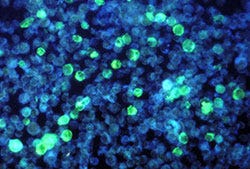Dipyridamole in the Management of Epstein-Barr Reactivation Syndrome
Generic Antiplatelet Drug has Off-target Antiviral Properties
By Peter A. McCullough, MD, MPH
With 75% of the population taking at least one COVID-19 vaccine and >94% of us having contracted COVID-19, we are seeing unprecedented numbers of Epstein-Barr virus reactivation syndrome. Either stress from the viral infection/vaccine reaction or genomic instability introduced by either provocateur is the cause of the reactivation of the dormant EBV virus that causes infectious mononucleosis. Symptoms of Epstein-Barr reactivation include malaise, fatigue, mild sore throat, and headache. Patients may also complain of unprovoked fatigue or feeling unrested in the morning. Lymph nodes in the head and neck can be swollen.
Lab testing is multiplexed for EBV and here is what the CDC says:
“Epstein-Barr virus (EBV), also known as human herpesvirus 4, is a gamma herpes virus that occurs only in humans. Laboratory testing can help distinguish whether someone is susceptible to EBV infection or has a recent or past infection.
Healthcare providers can test for antibodies to the following EBV-associated antigens:
This photomicrograph depicts leukemia cells that contain Epstein-Barr virus using an FA staining technique.
Viral capsid antigen (VCA)
Anti-VCA IgM appears early in EBV infection and usually disappears within four to six weeks.
Anti-VCA IgG appears in the acute phase of EBV infection, peaks at two to four weeks after onset, declines slightly then persists for the rest of a person’s life.
Early antigen (EA)
Anti-EA IgG appears in the acute phase of illness and generally falls to undetectable levels after three to six months. In many people, detection of antibody to EA is a sign of active infection. However, 20% of healthy people may have antibodies against EA for years. A return of EA is critical to the diagnosis of EBV reactivation syndrome.EBV nuclear antigen (EBNA)
Antibody to EBNA, determined by the standard immunofluorescent test, is not seen in the acute phase of EBV infection but slowly appears two to four months after onset of symptoms and persists for the rest of a person’s life. Other EBNA enzyme immunoassays may report false positive results.
Keep reading with a 7-day free trial
Subscribe to Courageous Discourse™ with Dr. Peter McCullough & John Leake to keep reading this post and get 7 days of free access to the full post archives.






